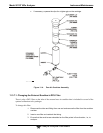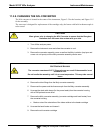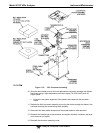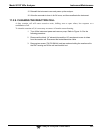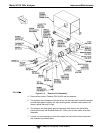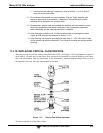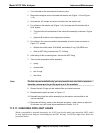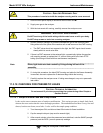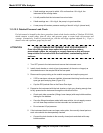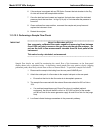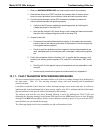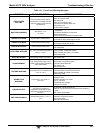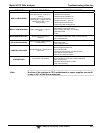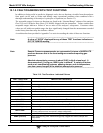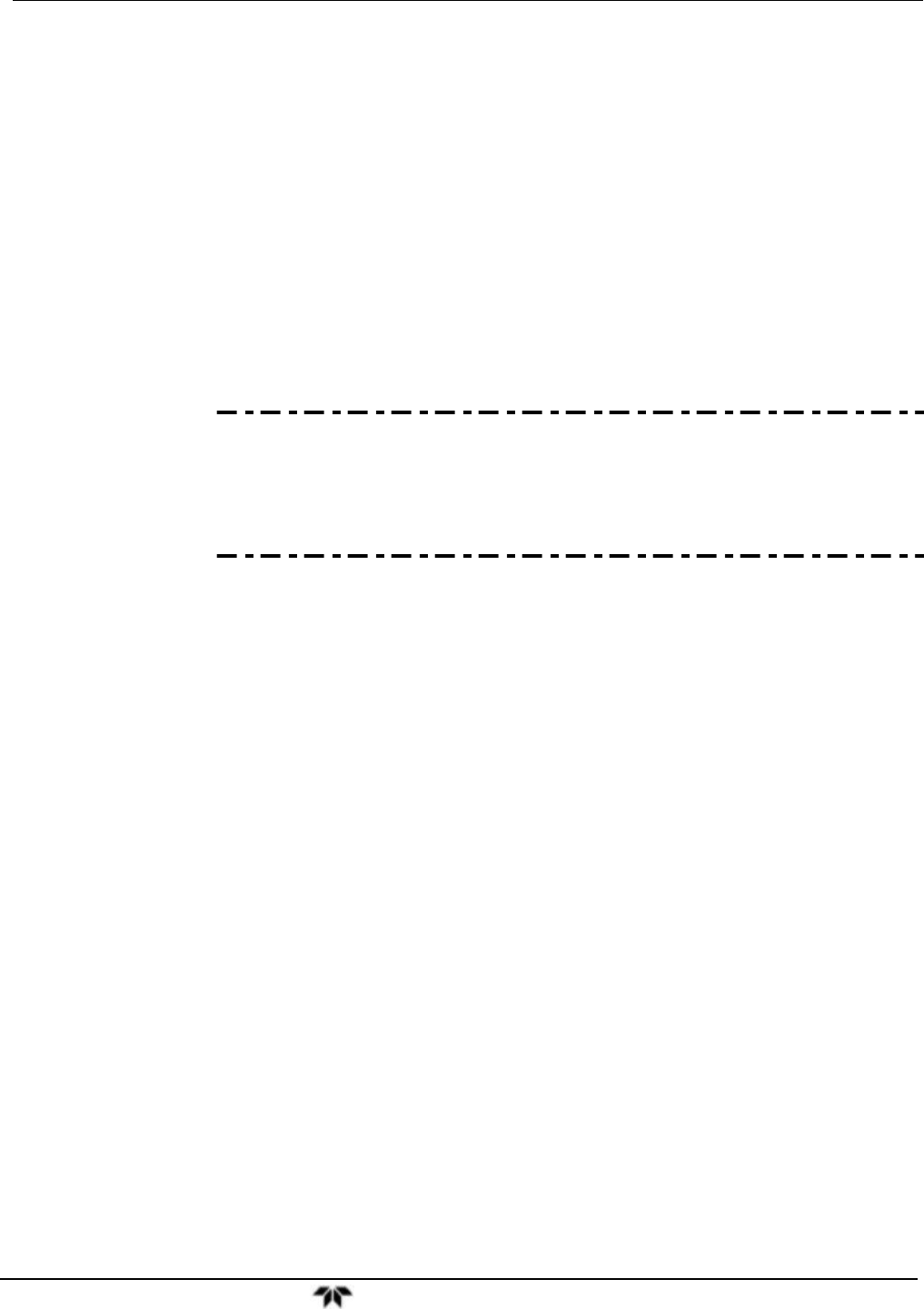
Model 9110T NOx Analyzer Instrument Maintenance
Teledyne Analytical Instruments 259
If both readings are equal to within 10% and less than 10 in-Hg-A, the
instrument is free of large leaks.
It is still possible that the instrument has minor leaks.
If both readings are < 10 in-Hg-A, the pump is in good condition.
A new pump will create a pressure reading of about 4 in-Hg-A (at sea level).
11.3.12.2. Detailed Pressure Leak Check
If a leak cannot be located by the above procedure, obtain a leak checker similar to Teledyne P/N 01960,
which contains a small pump, shut-off valve, and pressure gauge to create both over-pressure and
vacuum. Alternatively, a tank of pressurized gas, with the two-stage regulator adjusted to ≤ 15 psi, a
shutoff valve and a pressure gauge may be used.
ATTENTION
COULD DAMAGE INSTRUMENT AND VOID WARRANTY
Once tube fittings have been wetted with soap solution under a
pressurized system, do not apply or reapply vacuum as this will cause
soap solution to be sucked into the instrument, contaminating inside
surfaces.
1. Turn OFF power to the instrument and remove the instrument cover.
2. Install a leak checker or a tank of gas (compressed, oil-free air or nitrogen) as
described above on the sample inlet at the rear panel.
3. Disconnect the pump tubing on the outside rear panel and cap the pump port.
If IZS or zero/span valves are installed, disconnect the tubing from the zero and
span gas ports and plug them (Figure 3-3).
Cap the DFU particle filter on the Perma Pure dryer.
4. Pressurize the instrument with the leak checker or tank gas, allowing enough time
to fully pressurize the instrument through the critical flow orifice.
Check each tube connection (fittings, hose clamps) with soap bubble solution,
looking for fine bubbles.
Once the fittings have been wetted with soap solution, do not reapply vacuum
as it will draw soap solution into the instrument and contaminate it.
Do not exceed 15 psi pressure.
5. If the instrument has the zero and span valve option, the normally closed ports on
each valve should also be separately checked.
Connect the leak checker to the normally closed ports and check with soap
bubble solution.



